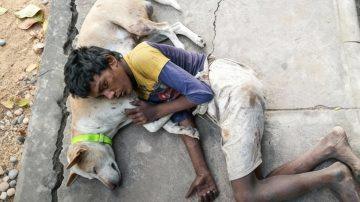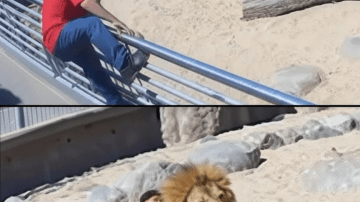The eyes that stare out from the murky water in this photograph tell a story far more profound than just that of a single animal. They speak of resilience, of the silent suffering beneath the surface of our everyday lives, and of the undeniable impact of human activity on the natural world. This dog, standing amidst plastic bottles, discarded debris, and stagnant water, is a poignant symbol of a widespread problem. Its wet fur and cautious gaze reflect not just a moment in time, but the continuous struggle faced by countless creatures forced to navigate environments polluted by our negligence. This image serves as a stark reminder that while we often discuss environmental degradation in abstract terms, its consequences are tangible, deeply personal, and often heartbreaking for those who have no voice. The question it poses to us is direct and urgent: what responsibility do we bear for the silent lives enduring the landscapes we’ve created?

Every day, millions of tons of waste are generated globally, much of which ends up in landfills, oceans, rivers, and even urban gutters. This unchecked disposal creates toxic environments, not only for wildlife but also for human communities, particularly in developing regions. The visual evidence of this pollution is undeniable and often heartbreaking.

Our collective reliance on single-use plastics is a major contributor to this crisis. These materials, designed for convenience, persist in the environment for hundreds of years, breaking down into microplastics that infiltrate ecosystems and food chains. The dog in the picture is surrounded by these very items – a stark reminder of their pervasive presence.

While the challenge is immense, solutions exist. Implementing robust recycling programs, fostering sustainable consumption habits, and investing in waste-to-energy technologies are crucial steps. Advocating for policies that hold manufacturers accountable for their product’s lifecycle is also vital.







